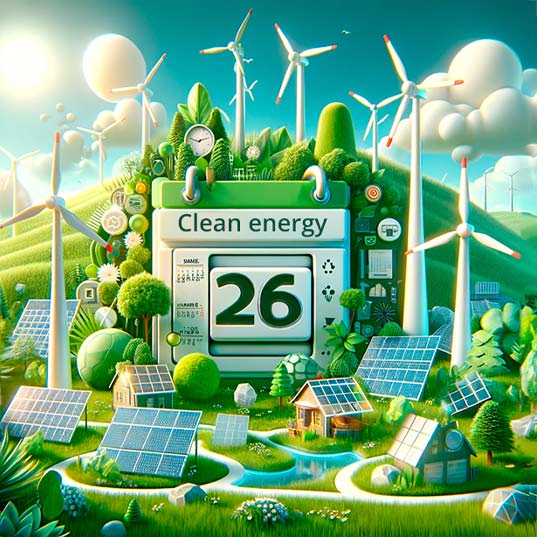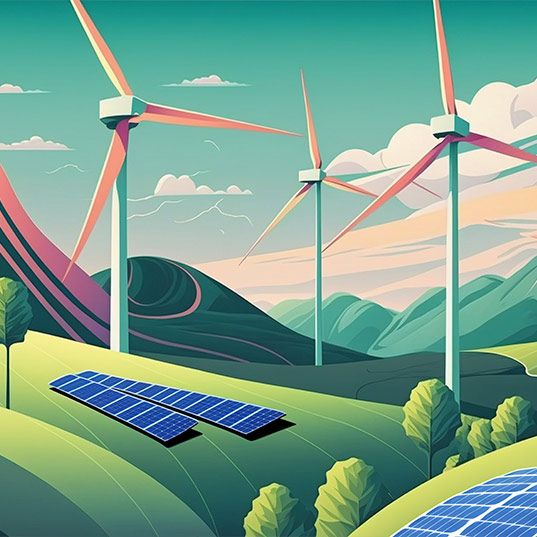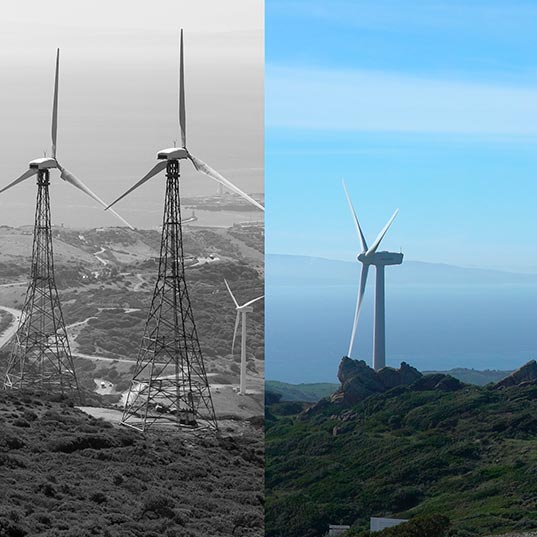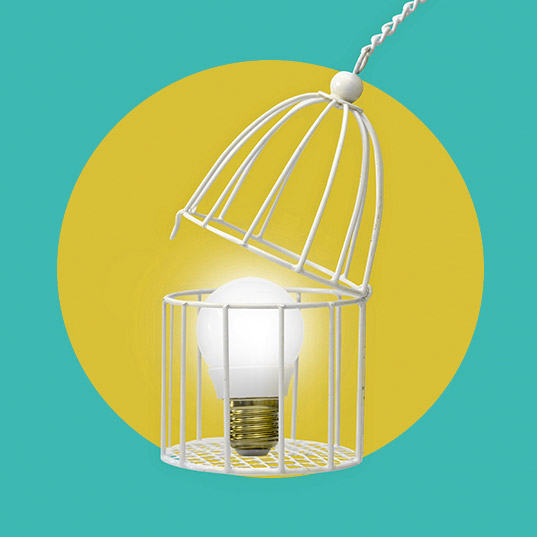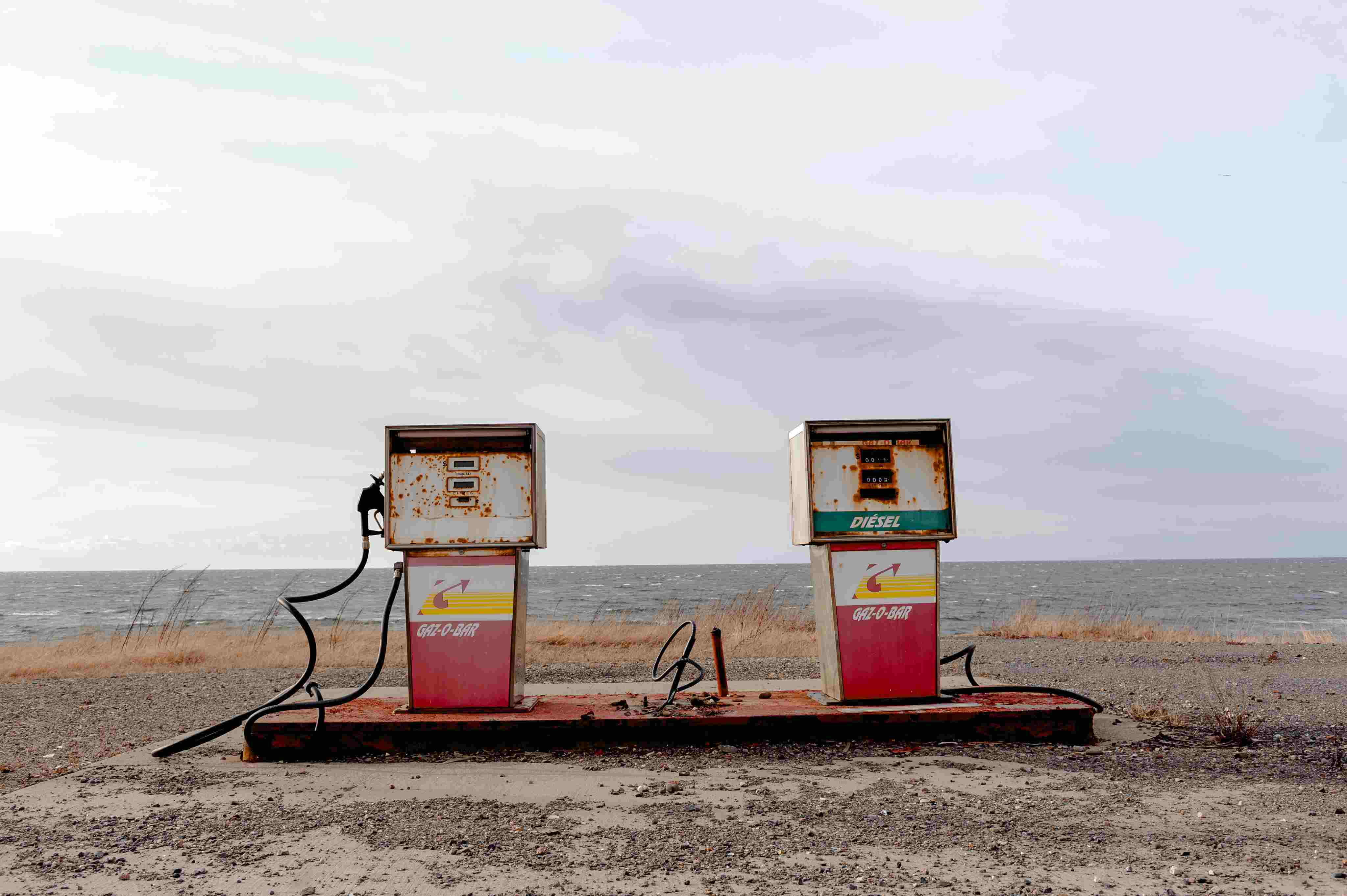Debunking myths about renewable energy
Although they are already the second largest source of electricity worldwide, there are still those who believe the myths about clean energy.
Development of renewable energies is essential if we want to slow down climate change and fight for all the planet’s inhabitants to have access to electricity. Renewable energies differ from fossil fuels in that they are inexhaustible, varied and consist of viable options for all corners of the planet. But, most importantly, renewable energies do not pollute.
A key 2030 Agenda goal urges decarbonization of the world economy. The installation of clean energy is the only way forward if we want to achieve the objective set by the Paris Agreement to limit the temperature of the planet to 1.5°C above pre-industrial levels, for which, according to IPCC, carbon neutrality will be necessary in 2050.
But there are still people who doubt the efficiency of clean energies and, although renewable energies are already the second largest source of electricity worldwide, give credence to the false myths and rumors concerning their viability. Below, we debunk some of these false arguments, spread by opponents of renewable energies:
Renewable energies are expensive. FALSE
Renewable energies are already the cheapest energy sources, and this will increasingly be the case. Both wind and solar power – since hydro has been competitive for many years already – have advanced enormously from a technological viewpoint and their installation costs have lowered markedly.
Over the past decade, the cost of photovoltaic modules has fallen by 94%, onshore wind turbines by 37% and lithium batteries for storing electricity by 85%. Today, these two renewable energy sources are cheaper than conventional sources in most parts of the world.
Renewable energies cannot cover all the demand. FALSE
We’re can already be 100% renewable in electricity. Electricity storage systems have come on leaps and bounds, and the technology could support a 100% renewable electricity grid.
The challenge lies in governments and authorities being able to step on the accelerator to bring about the energy transition. According to studies, midway through this century two-thirds of electricity worldwide will be produced by renewable energies, 40% of global end-user demand for energy will be covered by electricity (compared to 19% in 2017), 63% of which will be generated by solar photovoltaic and wind.
Renewable energies today already produce one out of every four kilowatts of electricity on the planet, and by mid this century they will generate two out of every three. While electricity only represents 20% of the energy the world consumes today, increasing electrification will certainly see it reach 40% by 2050.
Manufacturing a wind turbine consumes more energy than the machine will be able to generate. FALSE
A wind turbine offsets the energy used to make it in less than a year – and can function for over 30 years. Every wind turbine generates enough clean energy to cover the electrical demand from some 2,000 homes*. Moreover, the emissions produced by the manufacture and dismantling of a wind turbine represent around 1% of those it will avoid during its useful life in replacing production from coal, gas or fuel oil power stations, and this without counting the CO2 emitted during the building of those fossil fuel stations, nor the extraction or transport of fuel to those plants.
Wind turbines are very noisy. FALSE
The noise produced by a moving wind turbine at a distance of less than 500 meters, within which there are rarely homes anyway, is no greater than that produced by an electrodomestic appliance such as a fridge or microwave. Wind farms also have to comply with local regulations with respect to noise levels during the day and night and cannot exceed the limits established by law.
Renewable energies rob land from agriculture and livestock. FALSE
The surface area occupied by a wind turbine is minimal. In fact, wind farms are perfectly compatible with farming and livestock activities carried out on the same land.
Solar plants for their part are often installed on land without a previous use or even in desert environments where they don’t compete with livestock or agricultural activities. On the other hand, there are situations where photovoltaic plants use animals like sheep and goats to keep the land, on which they are installed, natural.
Wind turbines are lethal for birds. FALSE
The deaths of birds and bats by collision with wind turbines is much less than those produced by other human-led activities such as roads, railways, buildings or domestic cats, as well as those caused by the air pollution wind power helps to avoid.
Every renewable energies project must be accompanied by an environmental impact study before it can be approved by the competent authorities, which establish whether the site is compatible with the nature surrounding it, and corrective measures need to be adopted to minimize any harmful effects, e.g. monitoring and control by specialized teams, development of technological solutions such as repellents (ultrasound, noise and lights), detection and shutdown systems.
Wind turbines are bad for human health. FALSE
A renewable energies myth being spread in only a few countries. Independent public and private research has been conducted, however, and has concluded that there is no direct connection between wind farms and reported incidents of fainting or headaches.
Solar panels are made using polluting processes and are not recycled at the end of their useful lives. FALSE
It is calculated that state-of-the-art photovoltaic panels generate the energy expended during their manufacture within two years, whereas their useful life is more than 25 years, a period in which they will continue to generate clean, free energy.
Also, the main components of a photovoltaic panel are silicon, aluminum, glass and copper, so its manufacture does not suppose an especially polluting process that requires protection and safety measures beyond those for a conventional industrial process. Once the photovoltaic panel’s useful life is over, its components are classified as non-hazardous waste and are recoverable at rates of up to 95% or more.
Solar energy is useless at night. FALSE
Evidently, solar plants do not usually function at night, in the same way that wind farms do not operate when there’s no wind blowing. But the progress in developing storage technologies and falling costs are making it possible, when there is no immediate demand, to store the electricity produced and supply it later, when the user needs it, even if that is at night or when there is no wind.
Also, the complementarity between different renewable technologies is one of their main virtues and they are perfectly combinable so the best solution can be arrived at in any case.
*Calculated for 2,500 hours of equivalent production per year and 4,000 kWh/year of average consumption per home.
Source: WWF, The Climate Reality Project, SmartGridsInfo, El País, RamblingSDC, T-Solar


